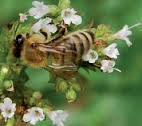 The weather is definitely much more wintery although we are still being blessed with some lovely calm days when the sun is giving enough warmth to encourage the bees out to forage in whatever is still flowering.
The weather is definitely much more wintery although we are still being blessed with some lovely calm days when the sun is giving enough warmth to encourage the bees out to forage in whatever is still flowering.
Brutal winter weather lead the bees to cluster in tight little balls to keep the queen and each other warm. Drones are long gone. The bees consume their honey stores at a steady rate and laying and brood rearing has generally stopped. Keep an eye on honey stores and if you are having any trouble with wasps attacking the hives, reduce the entrance to about a 25-50 mm opening. This makes the hive easier to defend.
The demand generated by the New Zealand wide manuka boom means a high demand for hives and queen bees. In the warm sub tropical climate of the far north bee keepers are right now increasing hive numbers to ready themselves for the manuka flowering season now flowering beautifully. Beekeeping in New Zealand has become so attractive that a third generation beekeeping family from Ireland made the decision five years ago to up sticks and bring their three kids and their beekeeping knowledge to our shores. They live and operate out of Ahipara north of Kaitaia and are working hard to become part of their small adopted community and to build their business.
They have identified the Horowhenua as a good source of Italian queen bees: a gentle non-aggressive, high producing bee compared to Carniolan bees, bred in the north. It is a much darker coloured Eastern European bee with good production but a strong swarming tendency after the manuka flow finishes. Beekeeping is no longer a highly localised or regional activity but becoming nationwide with hives moved around the country. This movement has larger organisations and highly mechanised systems and follows the manuka from August through to January. But beekeepers can never lose sight of the fact that caring for the bees and excellent animal husbandry is core to good practice and ongoing success.

